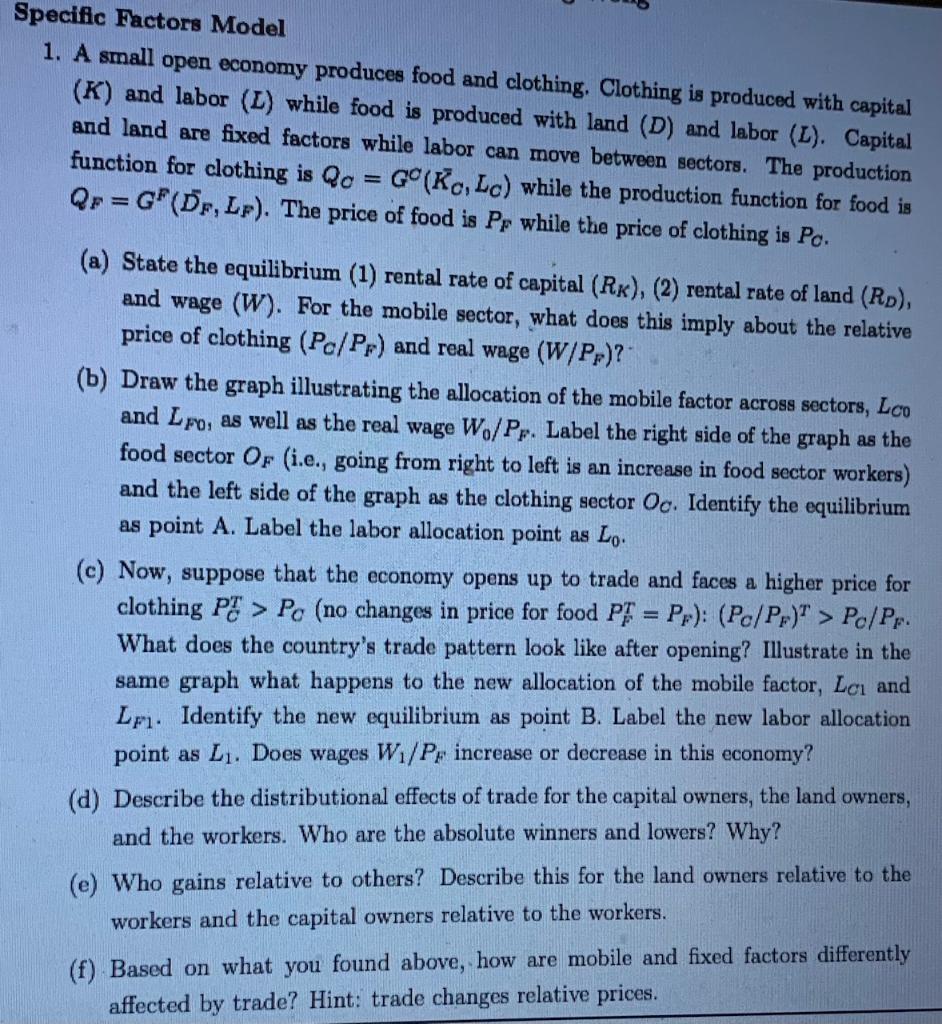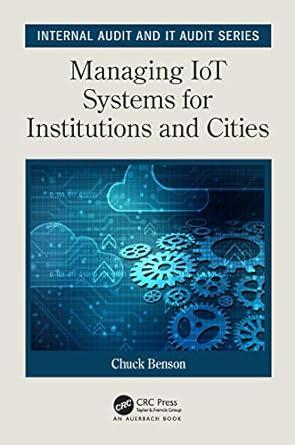
Specific Factors Model 1. A small open economy produces food and clothing. Clothing is produced with capital (K) and labor (L) while food is produced with land (D) and labor (L). Capital and land are fixed factors while labor can move between sectors. The production function for clothing is QO=GO(KC,LC) while the production function for food is QF=GF(DF,LF). The price of food is PF while the price of clothing is PC. (a) State the equilibrium (1) rental rate of capital (RK), (2) rental rate of land (RD), and wage (W). For the mobile sector, what does this imply about the relative price of clothing (PC/PF) and real wage (W/PF) ? (b) Draw the graph illustrating the allocation of the mobile factor across sectors, LC0 and LF0, as well as the real wage W0/PF. Label the right side of the graph as the food sector OF (i.e., going from right to left is an increase in food sector workers) and the left side of the graph as the clothing sector OC. Identify the equilibrium as point A. Label the labor allocation point as L0. (c) Now, suppose that the economy opens up to trade and faces a higher price for clothing PCT>PC (no changes in price for food PFT=PF ): (PC/PF)T>PC/PF. What does the country's trade pattern look like after opening? Illustrate in the same graph what happens to the new allocation of the mobile factor, LC1 and LF1. Identify the new equilibrium as point B. Label the new labor allocation point as L1. Does wages W1/PF increase or decrease in this economy? (d) Describe the distributional effects of trade for the capital owners, the land owners, and the workers. Who are the absolute winners and lowers? Why? (e) Who gains relative to others? Describe this for the land owners relative to the workers and the capital owners relative to the workers. (f) Based on what you found above, how are mobile and fixed factors differently affected by trade? Hint: trade changes relative prices. Specific Factors Model 1. A small open economy produces food and clothing. Clothing is produced with capital (K) and labor (L) while food is produced with land (D) and labor (L). Capital and land are fixed factors while labor can move between sectors. The production function for clothing is QO=GO(KC,LC) while the production function for food is QF=GF(DF,LF). The price of food is PF while the price of clothing is PC. (a) State the equilibrium (1) rental rate of capital (RK), (2) rental rate of land (RD), and wage (W). For the mobile sector, what does this imply about the relative price of clothing (PC/PF) and real wage (W/PF) ? (b) Draw the graph illustrating the allocation of the mobile factor across sectors, LC0 and LF0, as well as the real wage W0/PF. Label the right side of the graph as the food sector OF (i.e., going from right to left is an increase in food sector workers) and the left side of the graph as the clothing sector OC. Identify the equilibrium as point A. Label the labor allocation point as L0. (c) Now, suppose that the economy opens up to trade and faces a higher price for clothing PCT>PC (no changes in price for food PFT=PF ): (PC/PF)T>PC/PF. What does the country's trade pattern look like after opening? Illustrate in the same graph what happens to the new allocation of the mobile factor, LC1 and LF1. Identify the new equilibrium as point B. Label the new labor allocation point as L1. Does wages W1/PF increase or decrease in this economy? (d) Describe the distributional effects of trade for the capital owners, the land owners, and the workers. Who are the absolute winners and lowers? Why? (e) Who gains relative to others? Describe this for the land owners relative to the workers and the capital owners relative to the workers. (f) Based on what you found above, how are mobile and fixed factors differently affected by trade? Hint: trade changes relative prices







